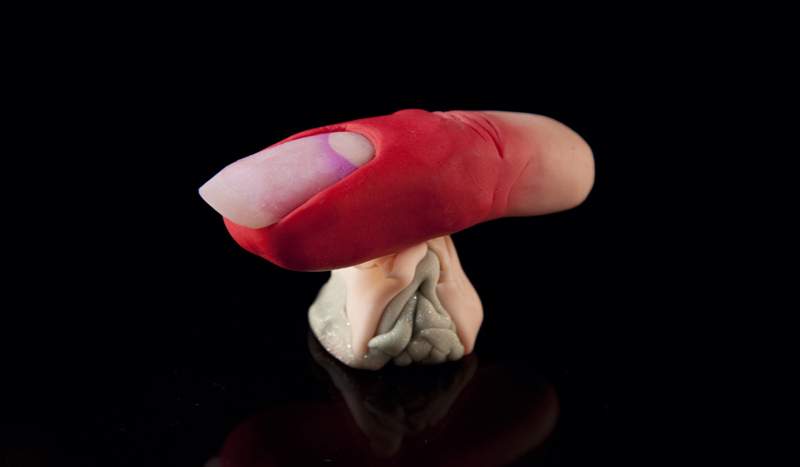Wunder Pond
It truly is a 'wunder' how some exhibition titles have so nice a ring to them as well as so appropriately describe a collection of artworks.
Overview
It truly is a 'wunder' how some exhibition titles have so nice a ring to them as well as so appropriately describe a collection of artworks. So it is with Wunder Pond, an exhibition of sometimes curiously small-scale, even Lilliputian, objets d'art, sculptures, models, and paintings by four contemporary artists from Sydney: David Capra, Charles Dennington, Hossein Ghaemi, and Matthew Timbers.
It is perhaps because the majority of the Wunder Pond works are sculptural abstracts, petite and beneath our eye-level, that wandering amid and around them permits — indeed, seduces — one to lean-in, to probe, and to inquire: What's this then? And it is probably a condition of this 'curious' behaviour that viewers' faces will often betray their entrancement at what's before them. Like curator Sandra Di Palma says (she's also the keen-eyed curator at Somedays Gallery), the exhibition title cites the German word Wunderkammer, which denotes a “place where a collection of curiosities and rarities is exhibited.” One of the paradoxes of this usage, however, is that the exhibition sometimes introduces us to things with which we’re already kind of familiar — the rarity is thus the result of how these subjects are made uncanny in their isolation from their commonplaces, and by the sheer equivocality of these forms and visions as abstractions and as reappropriations.
Particularly eerie is the array of objects so artfully configured in Dennington’s assemblages. In one work, a cartoonish and worm-like finger, dismembered, blood-red and engorged, sits, as if by chance, upon a porous bed of a jumbo caustic sponge, which is itself coated in a faded-out layer of maroon-red Ironlak. Elsewhere, a rubbery slice of Swiss cheese hangs out, surrealistically, with a corps of half-munched apples, their decaying skins somehow refulgent in bright blue, red and green gouache. Dennington’s works, as one of their titles suggests, are thus ‘Tiny Piles’ of our detrital everyday. They are odes to and models of the habitués of our trashcans — to eggshells and apple-cores, twigs and rubber — only that they're now remade and rearranged, tripped-out and beautified.
Surely the water references in Dennington’s works (there are fish skeletons as well as sponges), in the mirrored surface upon which Hossein Ghami’s Wig spookily revolves (Wig is simply a clump of hair which rotates quizzically on a mirror, and is seemingly alive, a la Cousin Itt), as well as the plant life featured in Capra’s works (see Munchkhin Land), played some role in prompting Di Palma's use of the word ‘Pond’ in the exhibition’s title. And yet, as connected as these works are, individually, to decorative water-features (they're reflective, absorptive, and immersive), it is also in the somewhat capricious arrangement of the works around the gallery space that a kind of wading-pool effect materialises. In this space, one’s eyes can bob and plunge above and through a range of peculiarly permeable bays of meaning and matter. And up at eye level, Timbers’ Frankenthaleresque cloudscapes only give further conviction to the feeling that in entering the Tin Sheds we may indeed have entered into another, possibly aquatic, possibly even post-aquatic, wonder world.
Image: Charles Dennington, Untitled', 2011. Image courtesy of Galerie Pom Pom





